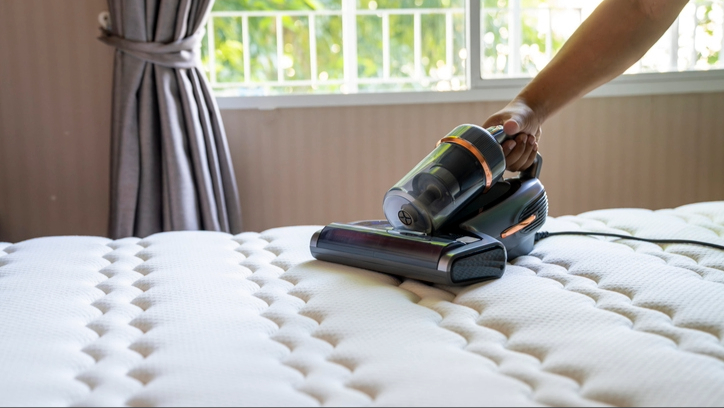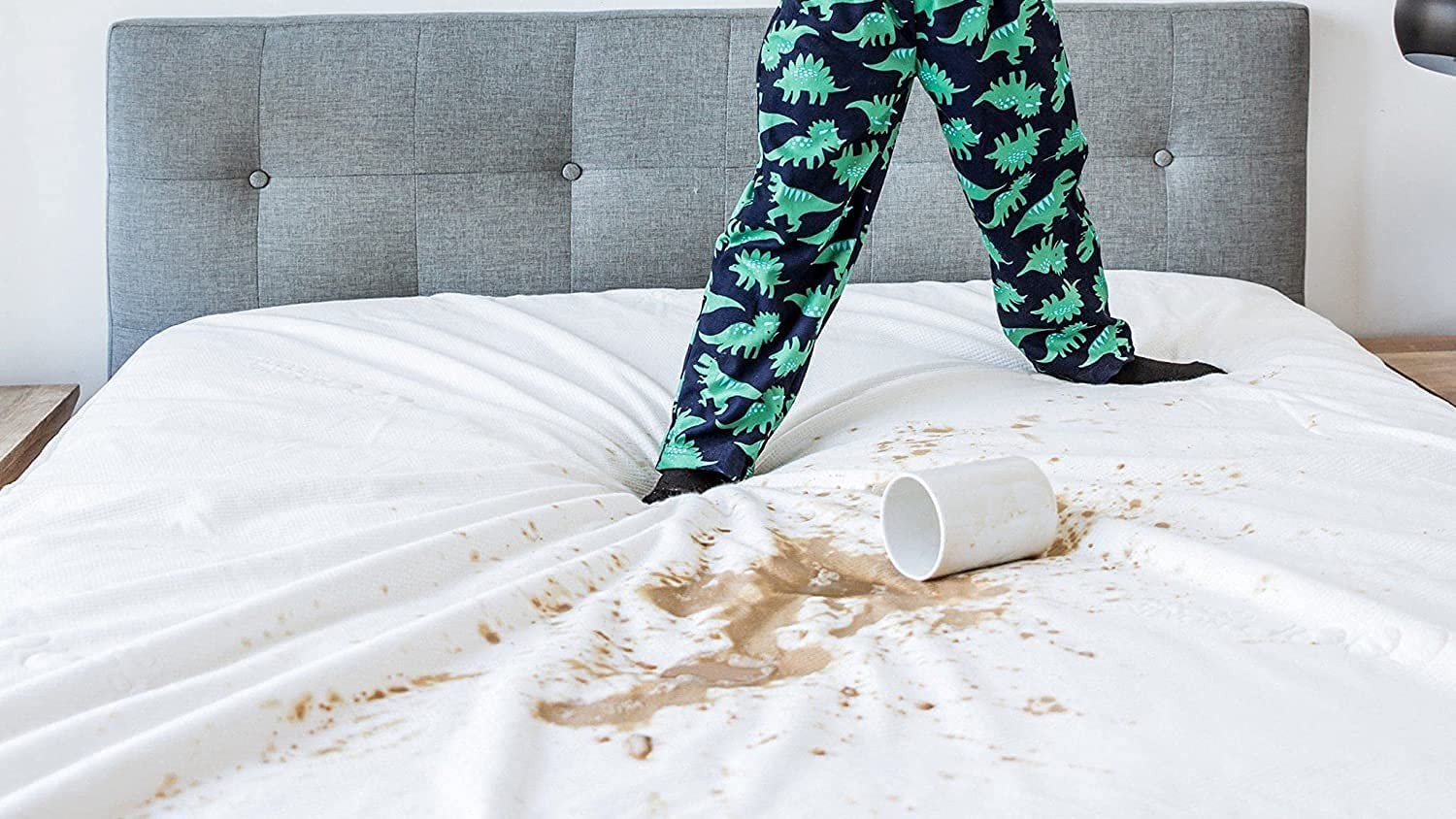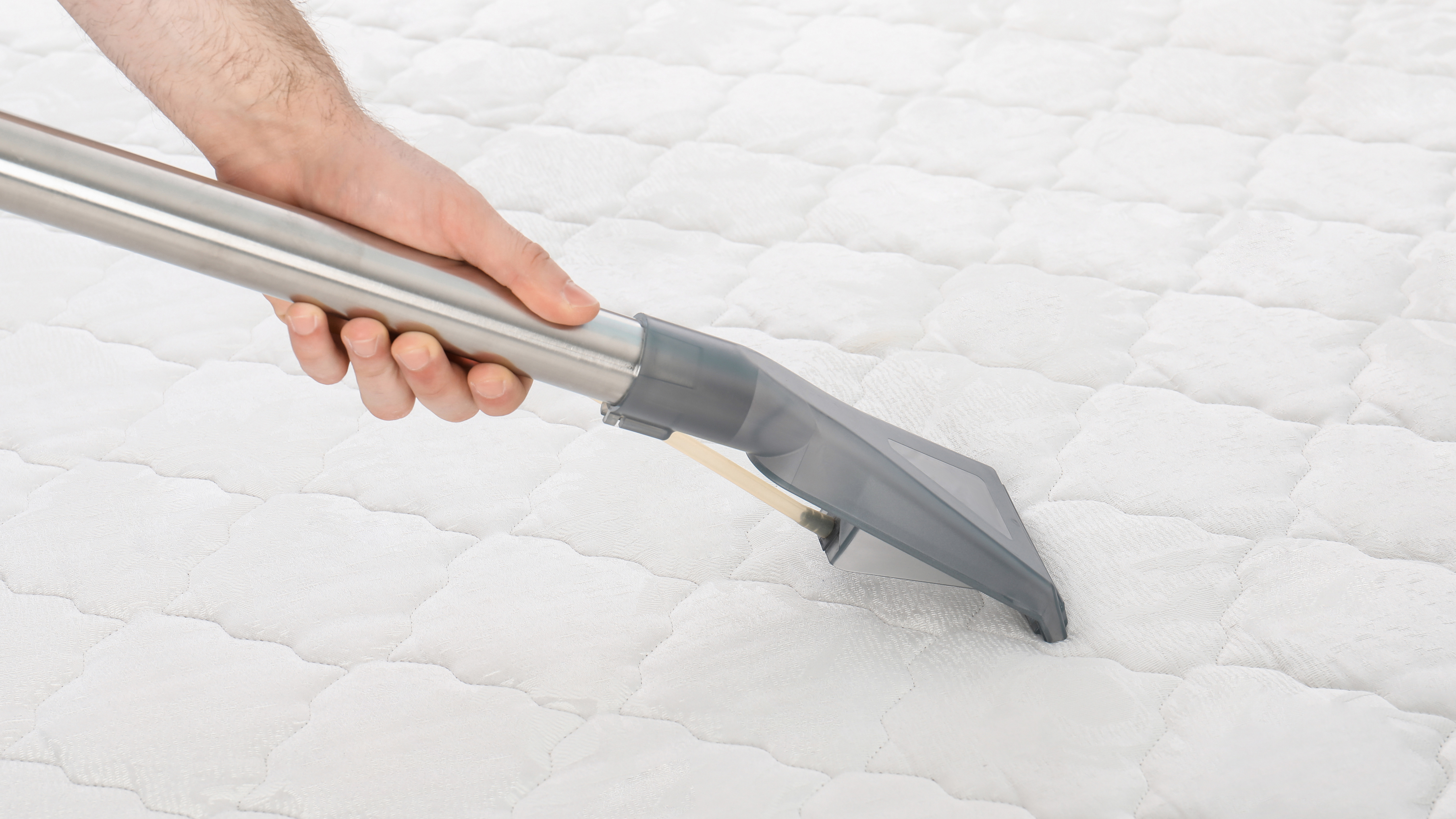7 mattress cleaning mistakes that age your bed prematurely — and how to avoid them
Don't fall victim to these common mattress cleaning mistakes

Buying a mattress is an investment, and one way to get the most out of it is with proper care and maintenance. Unfortunately, using the wrong tools and products can hurt your mattress more than help it – and so can being lax with your cleaning schedule. Below, we're sharing the six common mattress cleaning mistakes that can age your bed prematurely.
Of course, if your mattress is starting to show obvious signs of wear despite your best efforts, it's time to buy a new one. Browse our guide to this year's best mattresses for all sleepers and budgets to find your next dream bed – and use the advice in this article to keep it as good as new. We're approaching a good time to buy too as this year's Black Friday mattress deals are arriving next month.
5 common mattress cleaning mistakes to avoid
1. Using harsh chemicals
Store-bought cleaners often contain bleach or strong solvents that can break down the fibers and materials of your mattress, leading to a lumpy, uneven surface that will result in a poor night's sleep (and aches and pains for you). What's more, these harsh chemicals often leave behind residue that can irritate your skin or cause respiratory issues.
Fortunately, it's easy to clean your mattress with household products you already have such as baking soda and white vinegar. Dish soap can also work, as well as a mild laundry detergent diluted with water.
2. Over-wetting the mattress
Avoid over-saturating the surface of your mattress. Excess liquids will lead to mold and mildew growth, which won’t just damage your mattress but can pose a serious health risk, per the CDC. Getting your mattress too wet can also lead to sagging and reduced support, meaning you’ll need to replace your mattress before the end of its true lifespan.
When it comes to cleaning, use minimal liquid and ensure your mattress is fully dry before you add your sheets and sleep on it.

3. Not using a mattress protector
Using a mattress protector is one of the easiest ways that you can keep your bed in outstanding condition from day one. This barrier reduces the risk of exposing your mattress to spills, stains, dust mites, allergens, sweat, and sebum. It'll also help reduce the wear and tear on the surface so your bed lasts longer.
Get instant access to breaking news, the hottest reviews, great deals and helpful tips.
To find the best mattress protector for your needs, consider what your bed will need the most protection from. For example, go for a waterproof mattress protector for a young child's first 'big kid' bed or if you share a bed with your dogs. Hot sleepers will benefit from a cooling mattress protector that wicks away heat and moisture.
4. Not vacuuming your mattress
You should be changing your bedsheets every week but did you know that you should also be vacuuming your mattress at least once a month?
Dust, crumbs, dead skin cells, hair, and pet dander can accumulate on the surface of your mattress over time, providing a breeding ground for dust mites and bacteria. This build-up can irritate allergies and cause the fibers of your mattress to break down faster.

If you have allergies or your bedroom collects dust quickly, you'll want to vacuum your mattress more frequently than once a month. You may be able to widen the gap between cleanings if you use a mattress protector, but don't wait until your bed is in poor shape to do it.
Make sure to use the proper attachments, as well. A soft-bristled tool that has been designed to work on fabric and will gently remove all dust and debris without causing any damage. Using the rotating brush meant for flooring can damage the delicate fabric of your mattress cover by causing tears and loose threads.
5. Not rotating (or flipping) your mattress
You should rotate your mattress to prevent impressions from developing in the spot you sleep in every night, which can lead to a loss of support and a faster breakdown of materials. Generally speaking, you should be rotating your mattress every three to six months to keep the surface fresh. However, each manufacturer will have its own guidelines, so check the care instructions for your mattress to be sure.
How about flipping your mattress? Most modern mattresses are designed to be one-sided with top comfort layers and a definitive base. However, there are flippable designs that offer varying levels of comfort on each side. Traditional innerspring beds with identical construction on either side can also be flipped.

6. Ignoring spills and stains
Accidents happen, but it’s important to deal with them as soon as possible. Ignoring spills and stains can damage the mattress surface and turn it into a breeding ground for bacteria, mold and mildew. Plus, stains can be unsightly, and they will start to smell pretty bad if you don't tackle them immediately or properly.
Always address spills straight away by blotting the excess liquid with clean paper towels or an absorbent cloth until it comes up dry. For more stubborn stains and odors, you'll want to deep clean your mattress.
7. Not reading your bed's care label first
While some natural and chemical-based products are fine for use on most mattress materials, some should not be used on foam or organic materials. That's because they can sink into the cover and cause staining before actually breaking down and destroying the materials underneath the mattress cover.
Always read the care instructions for your mattress before cleaning it with a product. If you didn't keep the care instructions when you first bought your mattress, check to see if there's a version online.
How often should you clean your mattress?
How often you should clean your mattress depends on a couple of factors. If you’re talking about regular mattress maintenance such as vacuuming, then ideally this should be done once a week, but you can get away with once a month if you have a good mattress protector in place.
However, if you have allergies, pets, regular accidents or maybe you like snacking in bed, you should consider deep cleaning your mattress at least every three to six months.
Always remember to deal with spills, accidents and stains as soon as they happen. The faster you get on to the job, the easier they are to deal with and the less likely your mattress will be permanently damaged.
Should you steam clean your mattress?

If your bed needs a deep clean, consider steam cleaning your mattress. This method uses high heat of at least 100°C /212°F to remove dirt and grime, as well as kill dust mites, bed bugs, bacteria and other allergens that may be lurking in your mattress.
Note that not all mattresses can be steam cleaned, if you have a memory foam mattress, then this method should be avoided as both heat and water can break down the cellular structure of the foam. Always check the care instructions to see what cleaning methods are or aren't allowed.
Knowing the proper ways to keep your mattress clean can help it last for many years – which can save you money in the long run as you won't have to race out to replace it. This doesn’t have to be overly complicated; regular vacuuming and keeping on top of any stains or marks as they appear can make all the difference.
Even when you do your best to look after your mattress, at some point, you will need to invest in a new one. It's important to know the signs it's time to replace your mattress – and when even proper cleaning won't be enough to improve things.
If it's time for a replacement, have a look at today's best mattress deals below:

Rachael has a keen interest in all things sleep, including her expert knowledge on mattress cleaning, providing readers with the best hacks and tips to keep their beds clean, as well as trying out the latest viral cleaning products. Rachael also reports on leading mattress brands such as Helix, Saatva and Nectar, writing articles designed to help readers understand what they need from a new bed. She also enjoys reviewing home, travel and tech gadgets, especially anything that has been designed to make life easier like smart home gadgets. During the last 15 years, Rachael has contributed to various publications including Tom’s Guide, Creative Bloq, The Independent, The Spectator, Daily Express and more.
